Meng 1/35 AMX30B
The AMX30B is an odd duck. Contemporary tank designs favored increasing armor thickness and radical sloping to defeat anti-armor shells of increasing caliber, but the AMX design has almost no armor to speak of-- offering sufficient protection against small arms fire, but little else. At first glance, this smacks of the "typical French obsolesence" stereotype, but if you ditch that lazy thinking, the AMX is a revolutionary tank. The lack of armor protection is actually intentional: AMX realized that the development of man-portable anti-tank weapons effectively negated even the thickest of armor, so it was futile to spend time and money developing an armor layout that would produce a slow moving death trap. The idee fixe of the design team was that being unable to actually hit a tank was the tank's greatest asset, so the lack of heavy armor meant more speed could be squeezed out of the engine and transmission. As anyone who's played World Of Tanks knows, there's nothing more infuriating than missing a shot with a 122mm BL-9 cannon, then waiting thirteen seconds for the thing to reload while your faster target circles around behind you and fires at your backside with impunity (don't ask). Of course, we're talking about real tanks and the AMX30B isn't even in the game (yet), and real life showed the effectiveness of this strategy when during the Battle of Khafji, Qatari AMXs managed to knock out three Iraqi T55s. The only thing lacking was a real fire-on-the-move capability, but that was added in the AMX30B2. Meng has released a kit of this variant, but everywhere I've looked (at the time of this writing, anyway) it's been out of stock. Time marches on, and now the AMX30B is definitively obsolete, but the highly mobile tank is something that's caught on-- any videos of T90s flying over ramps or the Abrams zipping around like race cars is proof enough of that-- and advancements in lightweight composite armor are increasing protection without weight cost.
Anyway.
What is a tank without a gun? The rifled 105mm F1 gun sported by the AMX30B was little different from contemporary guns, but what set it apart was its ammunition. Shaped charge HEAT ammunition had just been coming into prominence at the end of World War Two, and rapidly being discovered was the incompatibility with HEAT ammunition and rifled barrels. When spun up, HEAT ammunition tends not to hit the surface of the target as flat as it could if it wasn't rotating, which is a problem when you want the shaped charge to make proper contact with the armor. So it seemed like you could have one but not the other-- spin stabilization or effective HEAT shells. But why not both? Enter the Obus G. Able to be fired out of a rifled barrel, the Obus G features a HEAT warhead floating inside a jacket of ball bearings, outside of which rotated the rest of the shell. This invention cut the rate of rotation of the warhead down to twenty RPM, and presto: a spin stabilized HEAT shell.The effectiveness of the Obus G fulfilled the designers' predictions about armor thickness: the Obus G can penetrate up to 400mm of solid rolled homogenous armor, and it is effective up to 3,000 meters. For comparison, consider the 152mm BL-8 and 122mm BL-9 experimental very high-power Soviet guns from the end of World War II: both guns only managed to penetrate 195mm of flat armor at 1500 meters, and 160 mm against armour angled at 30 degrees. The cross section of armor RHA plate that I've included should explain all that needs to be said about the penetration ability of modern AT rounds.
Nowadays, the most popular form of tank-killer rounds are Armor Peircing Fin Stablized Discarding Sabot, which is more or less a very tough dart that goes through most steel like a hot knife through butter. With performance like this (and meaningful composite armor years away) you can see the rationale behind the decisions of the AMX design bureau. Pictures say a thousand words, so please enjoy this visual representation of various types of contemporary AT munitions against a hapless T55 turret. (Normally I'd put these images inline, but you'll have to scroll down to see what I'm talking about.)
(4) 57mm ap round
(5) Typical impacts of different High Explosive Fragmentation shells. The lower one is a hit by a 57mm (HE) shell. The upper one is a hit by a 100mm (HE) shell, no penetration has occurred. The larger calibre hit has caused a breakage of the welding seams between the rear wall and roof armour of the turret.
(2) Main Battle Tank T55 100mm armour piercing round (100 APCBC). Hit, no penetration due to small angle of impact.
(1) Main Battle Tank T55 100mm armour piercing round (100 APCBC). Hit and penetration.
(3) Light recoilless rifle (55S55) of Finnish origin, Two hits and penetrations.
(6) 57mm Armour Piercing ammunition, no penetration due to the armour thickness and small angle of impact.
(8) hits and penetrations by the recoilless rifle HEAT ammunition.
(7) Several hits by 100mm tank gun HEAT rounds. Note a much larger penetration hole in comparison to the recoilless rifle HEAT penetrations (Position 8), tracks left on the surface by the fragments and impact of the shells stabilizing wings.
(7) Several hits by 100mm tank gun HEAT rounds.
(6) Hits by 57mm Armour Piercing ammunition, no penetration due to the armour thickness and small angle of impact.
(4) and (10) several hits and penetrations of 57mm armour piercing rounds. Some rounds have inflicted a bigger penetration hole than the calibre due to the breaking of the armour. A small angle of impact has caused a ricochet in one case.
(5) Typical impacts of different High Explosive Fragmentation shells. The lower one is a hit by a 57mm (HE) shell. The upper one is a hit by a 100mm (HE) shell, no penetration has occurred.
(1) Main Battle Tank T55 100mm armour piercing round (100 APCBC). Hit and penetration.
(9) Hit by the 100mm tank gun HEAT ammunition directly to the penetration hole left by the 100mm kinetic armour piercing round.
THE KIT:
There's a problem that's carried over from the Leopard I: the backs of the road wheels are devoid of detail. Instead of bolts, ribs and other hub detail like you'd see on the thirty-year old Heller kit, you get... a drum brake? I have no idea why Meng continues to do this-- it's not like there is a lack of extant tanks to take measurements from. In fact, looking at the Merkava IIID that I built a year ago, the road wheels on that kit are similarly represented. I know, this isn't the best angle, but here's what a real AMX30B road wheel looks like-- even from this picture, it's obvious to see that the backs of the wheels aren't drum brakes. Oh well. If it matters that much to you, wait for aftermarket or rob the wheels from the Heller kit. The reason for the goofy shape of the road wheels is to allow them to mount those poly-caps so the wheels can turn freely, which is a bit of a gimmick that I'll only probably use to ease the painting of the tires. Other than that, this gimmick is a mystery-- the kit-supplied tracks are nowhere nearly robust enough to "drive the tank around" on your carpet or desk! My kit also had the front part of the lower hull seriously distorted-- bent completely out of shape. Some gentle coaxing, warm water and warm fingers were able to massage it back into place. Warmth is the key-- cold plastic is more brittle than warm plastic.
CONSTRUCTION:
This is a new mold, so there isn't much in the way of flash-- but it's there and in some hard-to-see places, like part G5. You won't notice it until you're gluing it in place, so examine each peice before you proceed. A49 is an extremely tight fit into the hull, so I chamfered the edges of the parts that fit into the locating hole. It's still a fit tight enough to obviate the need for cement. The instructions would have you glue the hydraulic shock absorbers to the hull by way of the free-floating washer inside the shock absorber. A fine theory, but flawed; the floating washer has a miniscule indentation in its face into which you are supposed to place the world's tiniest drop of glue and not have it overflow or otherwise foul the joint. Ridiculous! The tolerances between the mounting post on the hull and the socket are so tight that you can press-fit the shock absorber. Don't worry about it falling off-- once the torsion bar suspension is fitted, it will hold the shock absorber in place well enough. The engine deck assembly is another victim of these tight tolerances. C1 is such a tight fit into the top of the hull that I had to chamfer the edges of the locating holes quite a bit before the deck was able to seat properly.
The kit gives you the choice of two styles of rear mudflaps-- one following the line of the tracks and one "flipped up"-- the flaps are hinged and all these represent are two different positions. It makes no difference whether they are up or down. You may wish to scribe a joint where the hinge is. I am omitting the placement of the external stowage (mufflers, tools, tracks, et al) until I have completed painting. There is a slight error in placing the photoetched brace P4 on the rear mudflap. The instructions show you placing it backwards. The rest of the hull goes together without much drama.
Assembly of the turret begins with the mechanisms to allow the gun to elevate and depress, and this is where some of the hairiness starts to manifest itself. The internal assembly fits extremely tightly inside the mantlet, and this is to be secured after affixing the rubber flap. It's so tight, actually, that I'd reccomend not using glue for the internal assembly. Or you can file down the moveable locating posts and try to use glue. I ended up snipping off the little ridges on the outer edges of the locating posts. This assembly now fits snugly into the mantlet, and a test-fit into the turret revealed that structural integrity is maintained.
Everything else goes together with, as I said before, very little drama. Where you'll probably start pulling your hair out is when it comes to assembling the track runs. Meng gives you a handy jig where you can whip up a segment of ten or so links, and like everything else in 1/35th scale that is advertised as "workable," the fact of the matter is that no matter what you do, the track runs will be extremely flimsy. It is unclear to me, but based on the fact that I see very little sag in side-view photographs, it appears like the AMX30B used live track links-- and perhaps some runs of vinyl tracks would have been more appropriate here. Meng wants you to use 80 links per side, but I added two links to each side to make the run actually fit. I appreciate the gimmick of the workable track links, but unless you've got tracks that are secured in a far more positive manner (think Fruil tracks with a metal pin) the tracks absolutely will disintegrate if they're "driven around." So don't do that. After assembling the run as instructed, I put a dot of Testors cement on the joint between each track. This cement is a "cold" cement-- it doesn't immediately melt the plastic and it has a slower drying time than other cements, so I've found that I have a comfortable window of time after finishing the dots of cements, spraying the track run with testors gunmetal metalizer and when the metalizer dries to have a stiff but workable run of tracks that-- if you treat it gingerly-- will be far easier to coax into position than if I were to do otherwise. How gingerly is still an unanswered question, as the runs broke apart multiple times and I had to do some quick and dirty glue surgery to get them back into place-- and even then I'm nowhere near satisfied with the result. Tracks are, in real life, solid chunks of metal that are made to be slammed, crunched and abused-- and dainty multi-part assemblies per track link are a recipe for disaster.
PAINTING
I'm not very skilled with an airbrush. Maybe it's just the fact that I'm lazy and don't like the idea of spending more time setting up and cleaning my airbrush than I would actually painting, but I've always tended to use spray cans more than anything else. In this case, I overcame my slothlike nature and used my... oh, I don't even know what the heck it is. It's an Iwata, that's all I know. Anyway, I sprayed some Model Master Engine Black over an overall coat of Testor's medium green, and over that I sprayed a mixture of Model Master Leather and Italian Red. Prominent detail parts like the aluminum mufflers were added (carefully!) after all of this. Most of the view ports are supplied in clear plastic that I coated with clear green. For other view ports that were supplied in opaque plastic, I painted the view port silver and then coated that with clear green.
Weathering was confined to some black washes and ground up chalk pastels, since most of these French tanks weren't terribly haggard.
Add some rolled up paper for tarps, and presto, there's your AMX-30B.
I'd do another one of these if not for the bloody tracks. >:(
http://www.scribd.com/doc/236057871/AFV-Weapons-Profile-63-AMX-30
http://tankarchives.blogspot.com/2013/06/soviet-very-high-power-guns-bl-9.html
https://forum.lowyat.net/topic/2796063/+820
http://www.primeportal.net/tanks/jean_thomas_rembert/amx_30_b2_brennus/index.php?Page=2
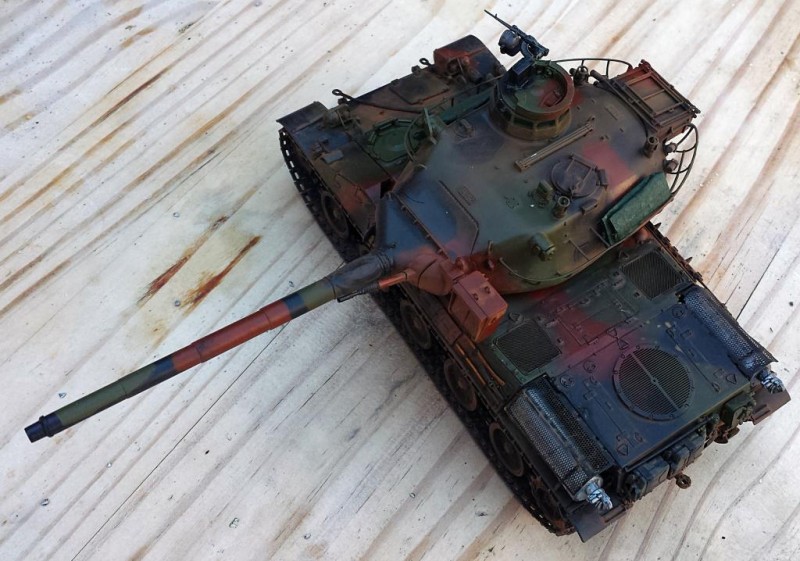







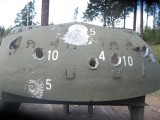







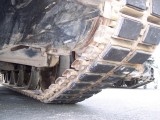


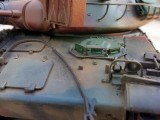







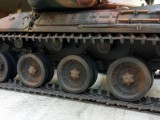





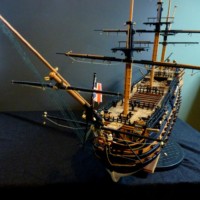
Odd duck or not, anyone can see you're passionate about the subject, and clearly you've immersed yourself into the build.
I would like to see more photos of your efforts, though, as representative of the archive images.
Nice job.
Sure! I'll take more photos when the weather clears up, otherwise everything's going to be covered in 1:1 scale mud.
Nice job all around...photos, narrative and build. I especially liked the pics of various hits on that turret. I've heard (and seen), good things re Meng kits. Never had one, though. Yet. 🙂
Thanks!
nice build for these French tank !
congratulations for your painting job !
😀 thanks!
Excellent, authoritative write up and fine build.
Thanks!
Interesting text. Highly informative. Lovely photos of an equally nice looking model! Well done
Thanks! 😀
A very informative build report and a very well done tank, Congratulations !
Aw shucks, thanks!
Nice one! I'm very into French stuff myself: armour (especially on wheels), wine (especially any kind of), aircraft (especially Mirage), cheese (especially Roquefort but any will do fine)!
Magnus
You know, my research into this AMX really gave me a healthy admiration for French engineering. They may seem like weird solutions to problems, but when they work, they work well!
Stunning model Wes. The PE and the chipping on the exhausts really set it off. It has that nice new tank look to it, very subtle weathering gives it that modern feel.
Really cool article, I guess it's strategy is don't get shot in the first place!
I'm just getting into armor myself. I'm starting assembly of the BMPT from Meng next week up at work. It looks like a complex kit but I've heard nothing but praise for it. I've not built a Meng model yet but some say they are the new Tamiya... What do you think?
Meng is pretty thoughtful when it comes to construction and instruction, but there are times where they have brain farts in engineering (the multi-part tracks, the drum-brake wheels, e.g.) where you need to come up with a creative solution. Otherwise, when they do a subject, they really go to town. I've yet to hear of a major screw up from them similar to other manufacturers (slime lights, ABS plastic, off-scale, chickenpox rivets, et cetera) so build away!
The tracks look scary to be honest! I've seen a couple of reviews which say they aren't as daunting as they look thanks to the track jig in the box, but they still look pretty complex!
Wes,
Beautifully done. Your painting is excellent.
Thanks!
Interesting write up, Wes, both about the real thing and the Meng model. It seems to have turned out well despite the tracks!